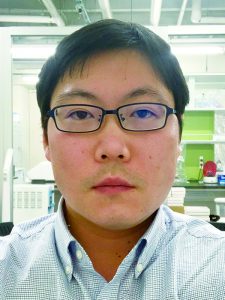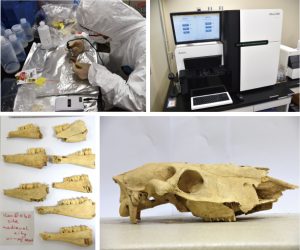C02:Development and Application of a Platform for Paleogenomics in East Asia
Visualizing the cultural hybridity and the Western impact with genomic data from archaeological remains |
|
| Takashi GAKUHARI (Kanazawa University) |
In the process of cultural hybridization between ancient China and the rest of the world, it is still unclear how individuals, the smallest unit of society, came into contact with individuals from other civilizations, and how this interaction was socially accepted within each local culture. In the process of cultural diffusion in ancient China from Central Asia and other parts of the West, domestic animals (horses, cattle, sheep, etc.) and wild species that were not originally in China were brought into the ancient civilization along with the movement of humans and, moreover, microorganisms (pathogens, parasites, etc.) that are invisible to the human eye are also thought to have been introduced. There is still no direct evidence for the origin of these organisms and the routes through which they were introduced.
Ancient DNA analysis, which directly extracts and compares genetic information from biological remains excavated from archaeological sites, has been vigorously promoted worldwide. Within the last decade, the analysis of huge amounts of DNA sequences (genomic information) using next-generation sequencing technologies has made it possible to detect interbreeding and admixing between different regions.
In this project, by constructing a new dedicated platform for large-scale analysis of ancient genomic data, we will be able to genetically evaluate (1) human dynamics from the re-analysis of modern humans and ancient human remains (evaluation of admixture between sites within the Chinese Neolithic and admixture from Central Asia, such as Kyrgyzstan), (2) the dynamics of “things” from the analysis of ancient livestock (evaluation of dispersal of goats and sheep from Central Asia), and (3) the dynamics of humans in terms of animals and pathogens that parasitize humans (wild animals, periodontal disease bacteria, etc.), in an attempt to visualize the hybridity inside and outside ancient China during the formation of ancient Chinese civilization.
Members
| Principal investigator | Takashi GAKUHARI | Kanazawa University |
|---|---|---|
| Co-investigator | Koji ISHIYA | The National Institute of Advanced Industrial Science and Technology |
| Shigeki NAKAGOME | Kanazawa University(Trinity College Dublin) | |
| Daisuke WAKU | Tokyo University of Agriculture | |
| Rikai SAWAFUJI | The Graduate University for Advanced Studies |


